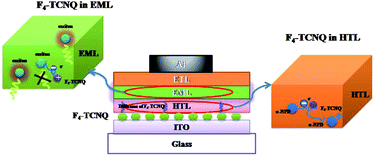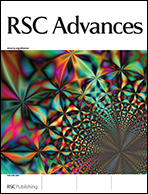Study of 2,3,5,6-tetrafluoro-7,7′,8,8′- tetracyano quinodimethane diffusion in organic light emitting diodes using secondary ion mass spectroscopy
Abstract
In this work, 2,3,5,6 – tetrafluoro – 7,7′,8,8′- tetracyano quinodimethane (F4-TCNQ) diffusion has been studied using secondary ion mass spectroscopy (SIMS). SIMS depth profiling has been performed in dual beam mode, in which, a low energy oxygen beam has been used for etching and a high energy Bi1+ ion beam has been used for analysis. F4-TCNQ has been identified by the distinguishable presence of fluorine in organic layers. For this study, organic light emitting diodes (OLEDs) were fabricated with F4-TCNQ as a hole injection layer with 1, 2.5 and 5.5 nm thicknesses. The diffusion length and depth were measured to be 13, 19, 19.1 nm and 27, 28, 29 nm for 1, 2.5, 5.5 nm thicknesses of F4-TCNQ, respectively. The diffusion of F4-TCNQ into the hole transport layer leads to the ionization of F4-TCNQ molecules and p-type doping of the hole transport material. The effect of the electric field on the diffusion was also studied by performing the depth profiling on electric field applied OLEDs and it was observed that the application of the electric field has increased both the diffusion length and depth of F4-TCNQ. This effect was found to be more pronounced for the OLED with 1 nm thickness of F4-TCNQ in comparison to the OLEDs with 2.5 and 5.5 nm thicknesses of F4-TCNQ. The field affected diffusion length and depth were found to be 14.5, 19.5, 19.6 and 35, 28.6, 29.6 nm for OLEDs with 1, 2.5, 5.5 nm thicknesses of F4-TCNQ hole injection layer. The decrease in the field effect has been ascribed as being due to the increase in the cluster density and size. Further, the effect of F4-TCNQ diffusion on OLEDs has been studied by capturing the optical images at different instances of time. OLEDs with 1 nm F4-TCNQ layer were found to be the most unstable. This effect has been ascribed as being due to diffusion of F4-TCNQ into the emissive layer which leads to the dissociation of excitons formed inside the emissive layer.


 Please wait while we load your content...
Please wait while we load your content...